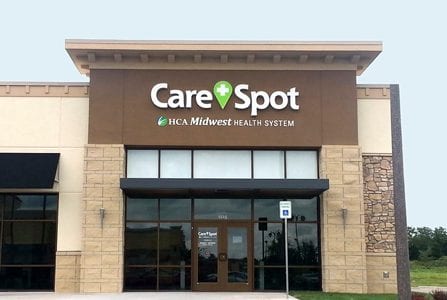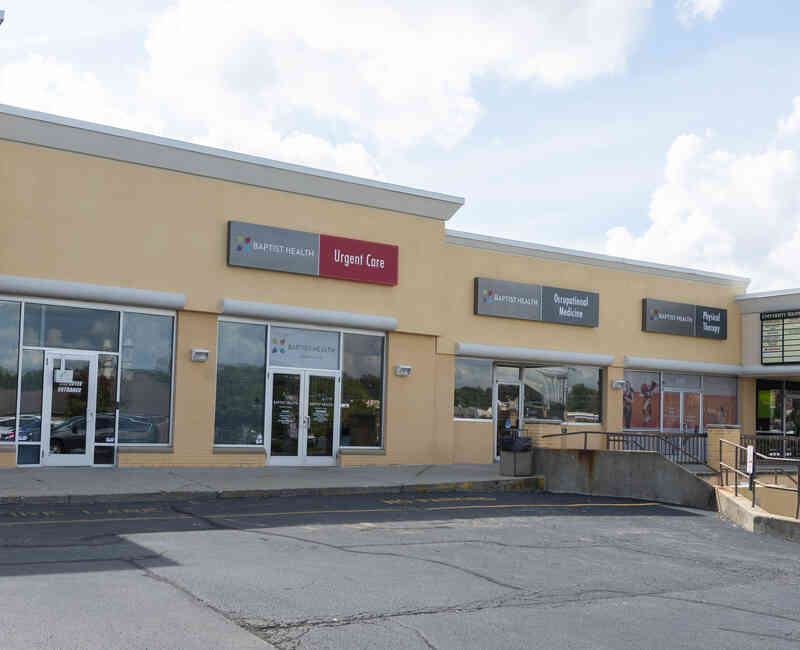Specialist Advice on Navigating Clinic Options for Urgent Care
Wiki Article
Just How Urgent Care Clinics Enhance Access to Healthcare for Clients With Immediate however Non-Emergent Medical Needs
Urgent treatment facilities have emerged as an essential component in the medical care landscape, addressing the demands of patients that require immediate interest for non-emergent problems. By operating beyond standard office hours and offering a structured approach to minor injuries and illnesses, these facilities not just decrease the burden on emergency divisions but also boost general person accessibility to timely treatment. As we think about the ramifications of this design, it comes to be necessary to take a look at how urgent treatment facilities are changing client experiences and results in ways that warrant further exploration.
Role of Urgent Care Clinics
Immediate care facilities play a crucial function in the healthcare system by providing available and immediate clinical services for non-life-threatening conditions. These centers function as an important bridge in between main care service providers and emergency situation divisions, efficiently relieving the problem on hospitals while making certain clients receive timely care. By running expanded hours, including nights and weekend breaks, urgent care clinics accommodate individuals that may not have the adaptability to go to a conventional doctor's workplace during basic business hours.The spectrum of services used at immediate care centers includes treatment for small injuries, illnesses, and analysis services such as X-rays and laboratory tests. This breadth of treatment enables people to deal with a selection of health worries without the long haul times generally connected with emergency clinic. Moreover, urgent care clinics often use a varied team of medical care specialists, consisting of physicians, registered nurse practitioners, and physician aides, who are outfitted to take care of various clinical scenarios.
Advantages of Immediate Access

In addition, immediate access minimizes the problem on primary treatment service providers and emergency situation departments by drawing away much less critical situations to proper setups. This reduces congestion in emergency situation spaces, enabling those with real emergencies to get the immediate care they need without unnecessary delays.
Furthermore, the comfort of prolonged hours and walk-in schedule means that people can seek treatment without the demand for visits, which is especially useful for people with unpredictable schedules or those who may experience abrupt wellness issues. - Urgent Care
The ease of access of immediate treatment facilities cultivates an aggressive method to health and wellness, motivating people to look for clinical guidance and treatment earlier as opposed to later. This not just enhances individual fulfillment yet likewise advertises a society of precautionary care, eventually leading to healthier communities.
Comparison With Emergency Situation Spaces
Often, individuals find themselves uncertain whether to check out an immediate care clinic or an emergency situation room when faced with a clinical concern. Urgent Care. Understanding the distinctions in between these 2 healthcare options is crucial for making notified decisions. Immediate care facilities are designed to attend to instant yet non-emergent clinical issues, such as minor injuries, infections, or illnesses. They usually operate with extensive hours, including weekends and evenings, offering prompt gain access to for individuals who may not require the comprehensive solutions of a health center.On the other hand, emergency spaces are geared up to take care of serious situations and severe medical emergency situations, such as cardiovascular disease, strokes, or significant trauma. These facilities supply advanced diagnostic devices and professional appointments, which can lead to much longer wait times for people with less vital issues. On standard, emergency situation rooms often tend to be more costly anonymous than immediate treatment facilities, making immediate care a more cost-efficient choice for non-emergent requirements.
Ultimately, while both urgent care clinics and emergency clinic play crucial duties in the health care system, understanding their corresponding features permits clients to select the ideal setting based upon the necessity and nature of their medical concerns.
Solutions Offered by Urgent Treatment
Urgent care centers provide a broad variety of services customized to address non-emergent medical requirements, making them a hassle-free choice for individuals seeking timely interest. These facilities are furnished to manage various problems, consisting of minor cracks, strains, and lacerations, which require immediate care but do not necessitate emergency clinic intervention.In addition, immediate care centers offer analysis solutions such as website link X-rays and laboratory tests, permitting quicker assessment and therapy of diseases. Clients typically existing with usual ailments like colds, influenza, and infections, which can be effectively managed on-site. Moreover, immediate treatment facilities frequently supply preventive solutions, including inoculations and health testings, adding to general public wellness.
One more crucial service used is the management of persistent conditions worsened by severe signs and symptoms, such as bronchial asthma or diabetic issues, making certain patients obtain prompt treatment without overwhelming emergency services. Many facilities likewise prolong their hours past conventional workplace schedules, improving ease of access for clients who might home require treatment throughout evenings or weekends.
Improving Patient Results

Immediate treatment centers are outfitted to take care of an array of non-emergent clinical issues, including small injuries, infections, and health problems. Their concentrate on accessible, high-quality treatment enables clients to obtain preventative solutions and proper treatments, fostering far better health and wellness management. In addition, these centers frequently use a multidisciplinary technique, integrating numerous health care professionals to make sure extensive treatment.
Individual education is likewise a key element of improving results. Immediate care suppliers regularly offer support on follow-up care, precautionary actions, and way of life alterations, empowering clients to take an energetic duty in their health and wellness. Subsequently, the combination of instant accessibility, expert treatment, and person education not only improves satisfaction but likewise brings about improved long-term health results, strengthening the worth of urgent care centers in the medical care continuum.
Final Thought
In summary, urgent care facilities serve a vital function in boosting health care accessibility for patients with prompt, non-emergent clinical needs. By giving timely solutions outside conventional office hours and reducing wait times, these facilities effectively alleviate stress on emergency clinic. The variety of solutions supplied adds to improved individual end results, advertising positive wellness administration. Ultimately, immediate treatment centers are necessary in bridging the gap in between health care and emergency solutions, making certain reliable and available medical care for communities.
On standard, emergency situation rooms tend to be more costly than immediate care centers, making urgent care an extra cost-effective choice for non-emergent demands. (Urgent Care)

Ultimately, urgent treatment facilities are crucial in bridging the gap between primary treatment and emergency solutions, guaranteeing reliable and obtainable medical care for neighborhoods.
Report this wiki page